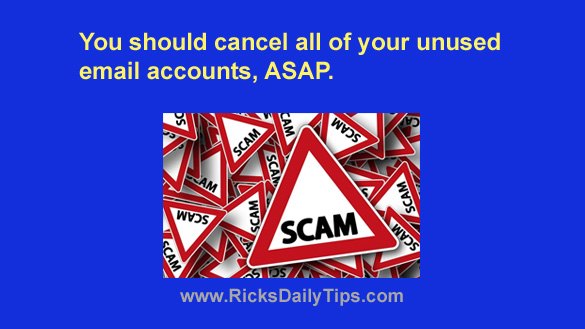 Email is a wonderful tool that allows us to correspond with family members, friends and associates all around the world in just a matter of moments.
Email is a wonderful tool that allows us to correspond with family members, friends and associates all around the world in just a matter of moments.
Gone are the days of having to write a letter, address an envelope, buy a stamp and send it on its merry way through the postal system with no guarantee that the recipient will receive it in a timely fashion, if at all.
But as the massive Yahoo hack reminded us, all is not perfect in the world of email.
Spammers and scammers rely heavily on email to send out bogus offers and perpetrate clever phishing attempts that are often successful at separating unsuspecting recipients from their money.
And worst of all, they just might be doing it in your name, right this very minute!
If you’ve been using the Internet for a while you probably have more than one online email account set up in your name, and one or more of them might be lying dormant, rarely if ever used.
Bad guys love to gain access to dormant email accounts because they can use them to send all kinds of Spam and fraudulent offers to potential victims while making it look like YOU are the culprit.
Even worse, there’s a great chance that you will never even know it’s happening until it’s too late to prevent the damage from occurring.
If you have one or more email accounts that you rarely use and really don’t need, I suggest that you cancel them right away.
Luckily, in most cases it’s very easy to cancel an email account.
The process varies from provider to provider but it’s usually just a matter of logging into the account and looking for the Terminate Account or Cancel Account link somewhere in the account Settings.
Here are links to instructions for canceling an account with a few of the largest email providers”
If you’ve forgotten an unwanted email account’s password you can usually reset it by clicking a “Forgot Password?” link (or something similar) on the login screen.
If you’re unable to reset the password you should be able to contact the email provider’s “Support” department and ask them what you need to do in order to get the account closed.
Bottom line: Email is a very powerful tool for helping us live our lives in the digital world, but it can also be very dangerous if we aren’t careful about how (and when) we use it.